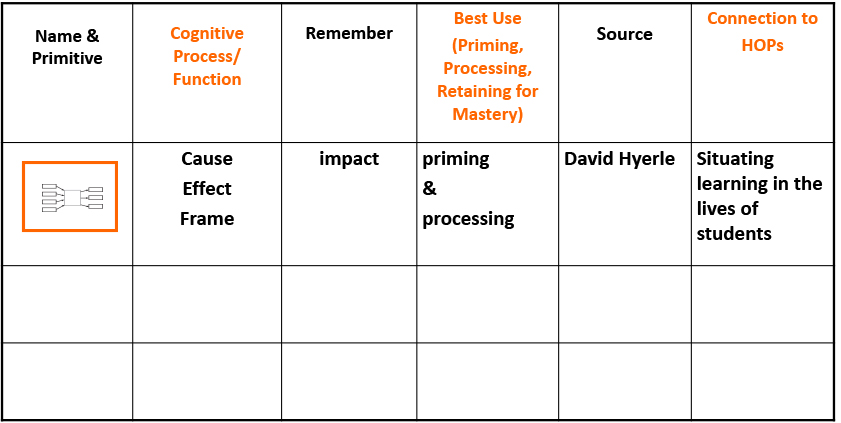
The Strategy Review Chart (SRC)
A Strategy for Capturing Information About Pedagogical Tools
This strategy provides a frame in which to capture the finer points of NUA strategies, protocols and practices. Rather than providing a pre-printed list of best practices, teachers are engaged in “building” the SRC in the context in which the strategies are introduced.
Skills Addressed
- Identifying the cognitive processes and purposes for each strategy entered
- Evaluating the features that make each strategy effective and engaging for students
Prerequisites
- Exposure to NUA strategies, protocols and practices
- Concepts about pedagogy design
Critical Components
- Name & Primitive: Add the name of the strategy, protocol or practice and a drawing (if applicable) of the same in its base form.
- Cognitive Process/Function: Consider the kind of thinking students are engaged in when using the strategy, protocol or practice; the purpose for using the strategy, protocol or practice.
- Remember: Identify 3-4 finer points to keep in mind when using the strategy, protocol or practice to ensure student/teacher success when using the strategy.
- Best Use: Decide upon which of the Three Phases of Learning are Priming-Getting ready to learn; Processing-Unpacking meaning or Retaining for Understanding-Holding on to learning for long-term memory is best suited for the strategy, protocol or practice.
- Source: The author/developer of the strategy, protocol or practice
- Connection to HOPs: Identify which of the High Operational Practices of The Pedagogy of Confidence is/are supported when using the strategy, protocol or practice.
Steps Involved
- Engage in an NUA strategy, protocol or practice.
- Debrief the experience by “walking” through each category on the SRC and adding the necessary information.
- Engage in a structured dialogue around each component whenever possible.
Related Learning Principles
- Organizing and managing one’s own thinking and learning supports motivation and self-direction.
- Effortful retrieval of learned information leads to long-term learning.
